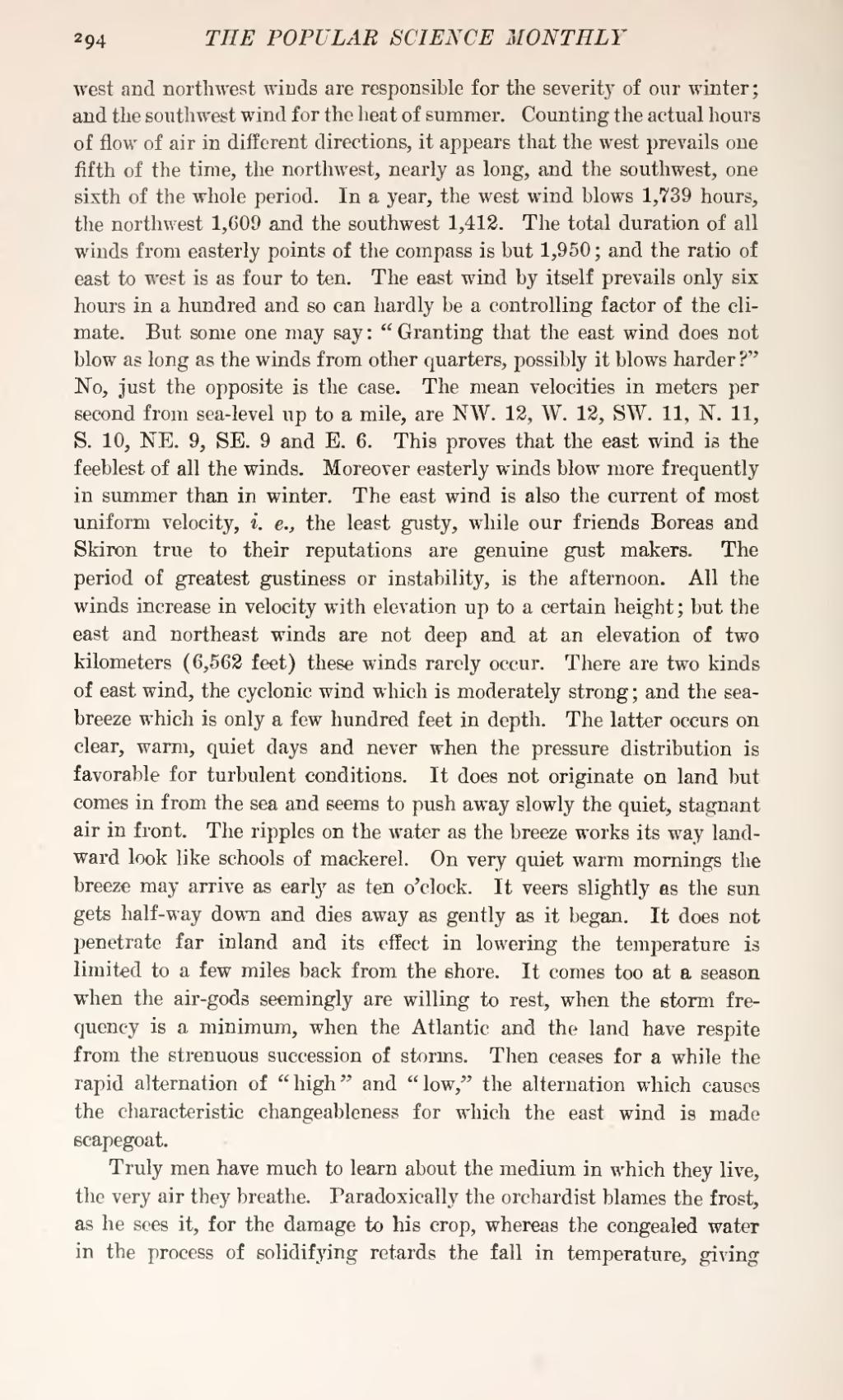west and northwest winds are responsible for the severity of our winter; and the southwest wind for the heat of summer. Counting the actual hours of flow of air in different directions, it appears that the west prevails one fifth of the time, the northwest, nearly as long, and the southwest, one sixth of the whole period. In a year, the west wind blows 1,739 hours, the northwest 1,609 and the southwest 1,412. The total duration of all winds from easterly points of the compass is but 1,950; and the ratio of east to west is as four to ten. The east wind by itself prevails only six hours in a hundred and so can hardly be a controlling factor of the climate. But some one may say: "Granting that the east wind does not blow as long as the winds from other quarters, possibly it blows harder?"
No, just the opposite is the case. The mean velocities in meters per second from sea-level up to a mile, are NW. 12, W. 12, SW. 11, N. 11, S. 10, NE. 9, SE. 9 and E. 6. This proves that the east wind is the feeblest of all the winds. Moreover easterly winds blow more frequently in summer than in winter. The east wind is also the current of most uniform velocity, i.e., the least gusty, while our friends Boreas and Skiron true to their reputations are genuine gust makers. The period of greatest gustiness or instability, is the afternoon. All the winds increase in velocity with elevation up to a certain height; but the east and northeast winds are not deep and at an elevation of two kilometers (6,562 feet) these winds rarely occur. There are two kinds of east wind, the cyclonic wind which is moderately strong; and the sea-breeze which is only a few hundred feet in depth. The latter occurs on clear, warm, quiet days and never when the pressure distribution is favorable for turbulent conditions. It does not originate on land but comes in from the sea and seems to push away slowly the quiet, stagnant air in front. The ripples on the water as the breeze works its way landward look like schools of mackerel. On very quiet warm mornings the breeze may arrive as early as ten o'clock. It veers slightly as the sun gets half-way down and dies away as gently as it began. It does not penetrate far inland and its effect in lowering the temperature is limited to a few miles back from the shore. It comes too at a season when the air-gods seemingly are willing to rest, when the storm frequency is a minimum, when the Atlantic and the land have respite from the strenuous succession of storms. Then ceases for a while the rapid alternation of "high" and "low," the alternation which causes the characteristic changeableness for which the east wind is made scapegoat.
Truly men have much to learn about the medium in which they live, the very air they breathe. Paradoxically the orchardist blames the frost, as he sees it, for the damage to his crop, whereas the congealed water in the process of solidifying retards the fall in temperature, giving
